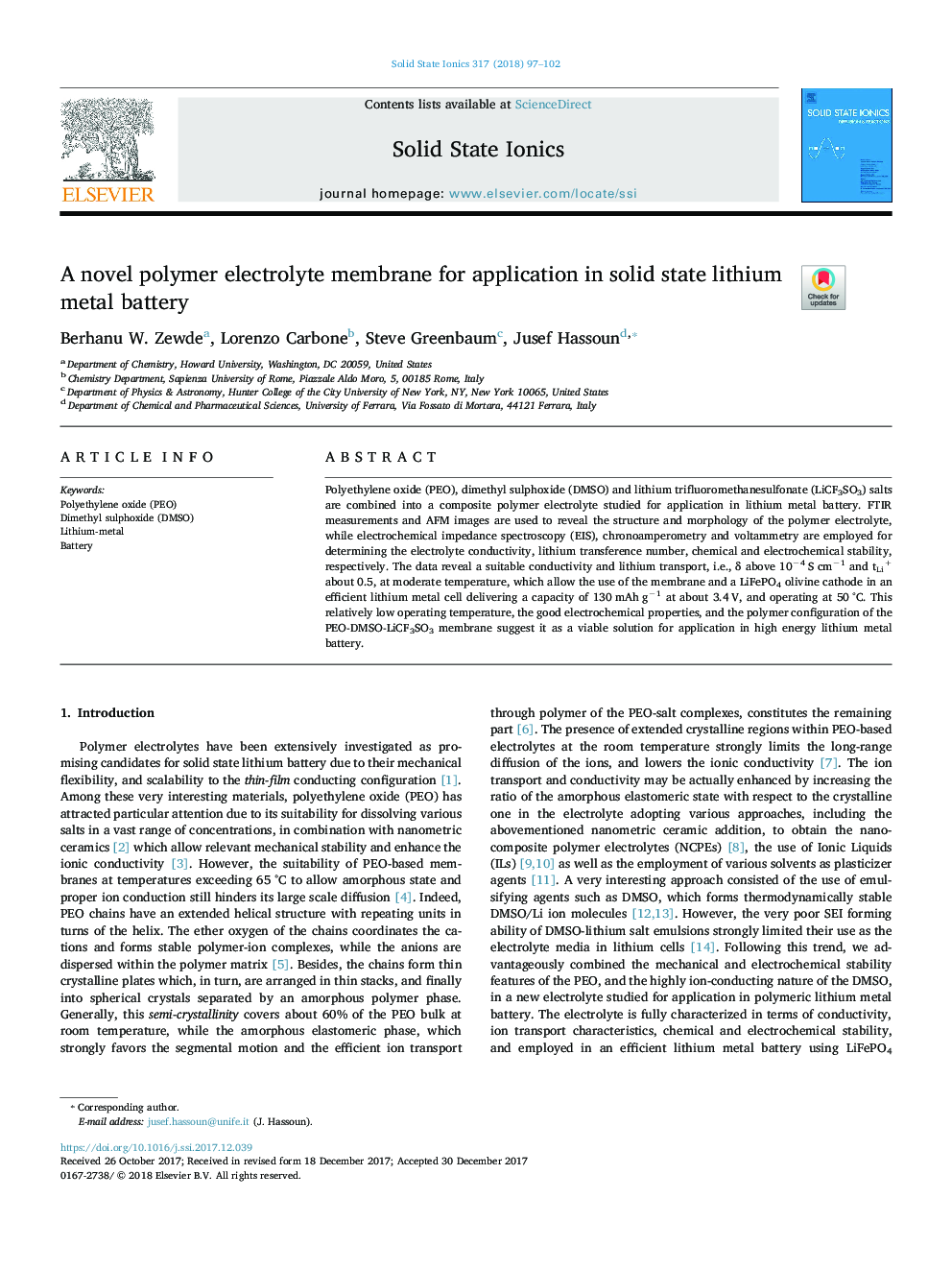| Article ID | Journal | Published Year | Pages | File Type |
|---|---|---|---|---|
| 7744468 | Solid State Ionics | 2018 | 6 Pages |
Abstract
Polyethylene oxide (PEO), dimethyl sulphoxide (DMSO) and lithium trifluoromethanesulfonate (LiCF3SO3) salts are combined into a composite polymer electrolyte studied for application in lithium metal battery. FTIR measurements and AFM images are used to reveal the structure and morphology of the polymer electrolyte, while electrochemical impedance spectroscopy (EIS), chronoamperometry and voltammetry are employed for determining the electrolyte conductivity, lithium transference number, chemical and electrochemical stability, respectively. The data reveal a suitable conductivity and lithium transport, i.e., δ above 10â4 S cmâ1 and tLi+ about 0.5, at moderate temperature, which allow the use of the membrane and a LiFePO4 olivine cathode in an efficient lithium metal cell delivering a capacity of 130 mAh gâ1 at about 3.4 V, and operating at 50 °C. This relatively low operating temperature, the good electrochemical properties, and the polymer configuration of the PEO-DMSO-LiCF3SO3 membrane suggest it as a viable solution for application in high energy lithium metal battery.
Related Topics
Physical Sciences and Engineering
Chemistry
Electrochemistry
Authors
Berhanu W. Zewde, Lorenzo Carbone, Steve Greenbaum, Jusef Hassoun,
